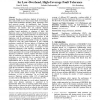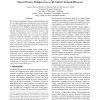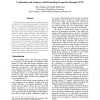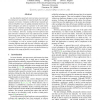87 search results - page 11 / 18 » Transient Fault Detection in State-Automata |
ASPLOS
2006
ACM
14 years 4 months ago
2006
ACM
Redundant threading architectures duplicate all instructions to detect and possibly recover from transient faults. Several lighter weight Partial Redundant Threading (PRT) archite...
ISCA
2002
IEEE
14 years 3 months ago
2002
IEEE
We develop an availability solution, called SafetyNet, that uses a unified, lightweight checkpoint/recovery mechanism to support multiple long-latency fault detection schemes. At...
IOLTS
2008
IEEE
14 years 5 months ago
2008
IEEE
Present and future semiconductor technologies are characterized by increasing parameters variations as well as an increasing susceptibility to external disturbances. Transient err...
DSN
2006
IEEE
14 years 5 months ago
2006
IEEE
As chip densities and clock rates increase, processors are becoming more susceptible to transient faults that can affect program correctness. Computer architects have typically ad...
ET
2008
13 years 10 months ago
2008
Processor cores embedded in systems-on-a-chip (SoCs) are often deployed in critical computations, and when affected by faults they may produce dramatic effects. When hardware harde...




